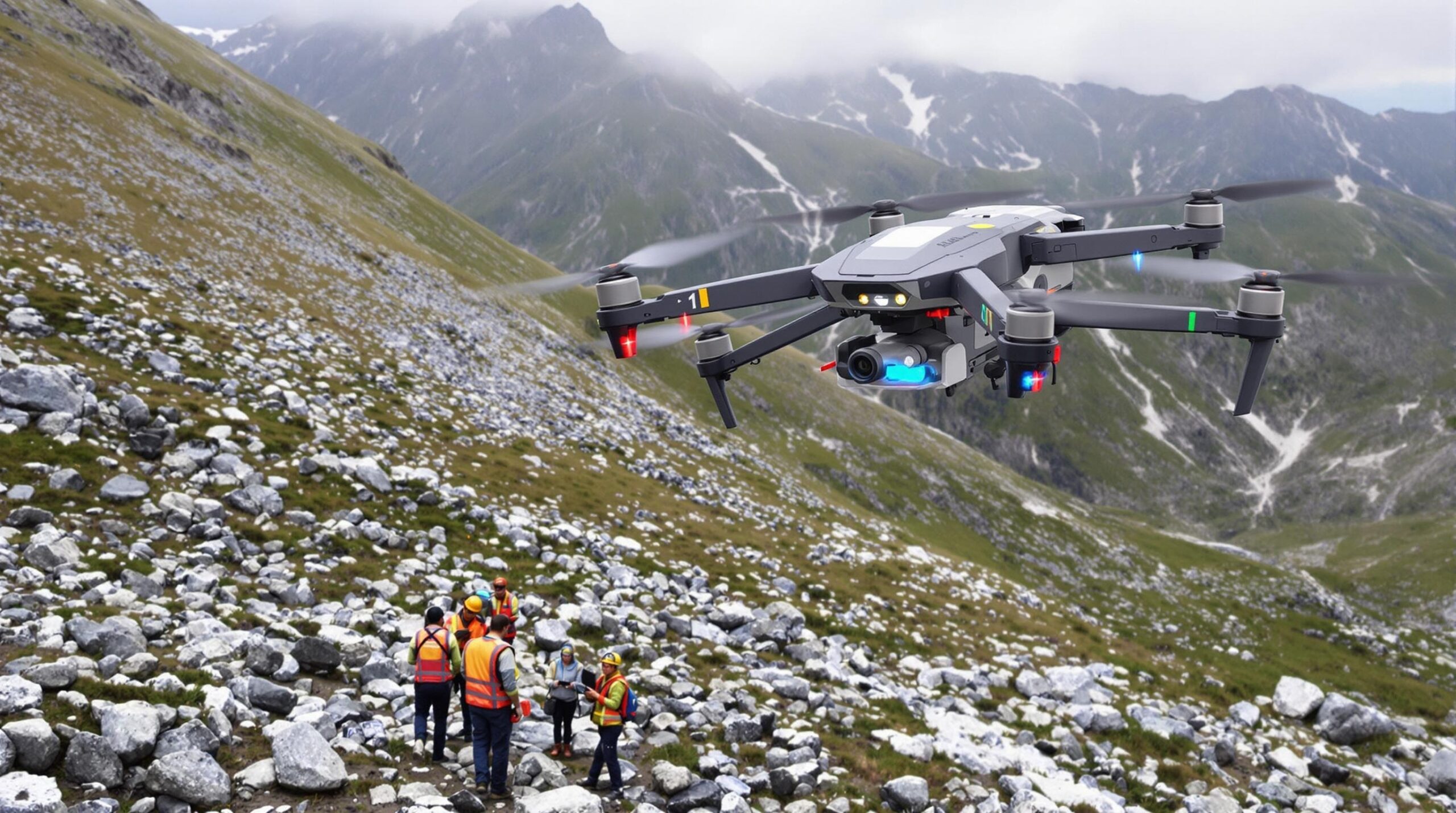Disaster strikes without warning, and spare time rarely exists during rescue missions. AI-powered drones are transforming search and rescue operations, especially in remote areas. These advanced machines enhance efficiency, accuracy, and safety for both rescuers and victims alike.
The Challenges of Remote Search and Rescue Missions
Search and rescue teams face challenging environments in remote locations. Thick forests, rugged mountains, and vast deserts hamper ground teams’ accessibility and visibility. Rescuers often struggle to cover large territories while racing against time.
Limited communication, adverse weather, and harsh terrain put human lives at risk. Helicopters can support efforts, but cost, noise, and limited availability pose significant constraints. Many missions end unsuccessfully or take longer than needed, risking precious lives due to environmental barriers.
AI-Powered Drones: A Technological Breakthrough
AI-powered drones use artificial intelligence algorithms to optimize search methods. They leverage advanced sensors, onboard computers, and real-time data processing to identify people and objects quickly. Drones can map areas, analyze visual data, and recognize shapes or patterns that resemble humans.
These drones fly autonomously and require minimal human guidance, allowing quick deployment in emergencies. They follow calculated, systematic search routes or dynamically adjust their paths based on AI-driven recommendations. Advanced drones operate in harsh weather and at night, unlike many traditional aerial vehicles.
Key Features: Enhancing Search and Rescue Operations
High-Resolution Cameras and Thermal Imaging
Modern AI-powered drones are fitted with high-resolution cameras and thermal imaging sensors. These features help drones spot individuals even in dense foliage or darkness. AI processes sensory input and flags potential human shapes in real time.
Machine Learning for Systematic Search Patterns
Drones use machine learning to analyze previous rescue missions and environmental data. Algorithms generate strategic flight paths, increasing the likelihood of finding missing persons promptly. Each new mission feeds data back to the AI, improving effectiveness over time.
Real-Time Data Transmission and Remote Command
AI-powered drones transmit data instantly to ground teams. Rescuers monitor live video feeds and AI-analyzed images from remote locations. This collaboration ensures that teams only enter dangerous areas when necessary, reducing the risk to human searchers.
Obstacle Avoidance and Extended Flight Times
AI-driven obstacle avoidance enables drones to safely navigate trees, rocks, and unpredictable terrain. Battery efficiency improvements allow drones to cover greater distances without frequent recharging. Combined, these advancements make drone searches safer and more comprehensive than before.
Benefits Over Traditional Search and Rescue Methods
AI-powered drones cover vast areas more quickly than humans on foot or vehicles. Autonomous operation enables multiple drones to work in tandem, further expanding coverage and reducing search time. Drones produce detailed aerial maps in minutes, supporting both rescue and recovery operations.
Rescue teams benefit from improved safety when deploying drones first. This approach limits exposure to dangerous environments until human aid is absolutely required. Drones cost less than helicopters and have lower operational risks, making them especially valuable for low-resource or volunteer organizations.
Case Studies: Drones in Real-Life Rescue Missions
Drones have saved countless lives worldwide. During the 2017 floods in Texas, AI drones quickly located stranded families, allowing for timely rescue. In Nepal’s mountainous regions, drones mapped earthquake-damaged areas, making targeted rescues possible where helicopters could not land.
Canadian search and rescue teams use AI-powered drones to spot missing hikers in dense forests. Their drones identify color contrasts and body heat signatures, directing human teams to precise locations. Each mission makes subsequent deployments more efficient due to ongoing algorithm learning.
Current Limitations and Ongoing Challenges
AI-powered drones face limitations, such as battery life and payload capacity. Remote regions can lack network infrastructure for data transmission. Inclement weather, though manageable, may still restrict drone flights in extreme circumstances.
False positives occur when AI misidentifies objects, leading to unnecessary searches. Secure communication and privacy concerns require careful management to ensure compliance with local regulations. Research continues to improve drone durability, reliability, and data accuracy.
The Future of AI in Search and Rescue Drones
Advances in battery technology are set to extend drone flight times. Improved cellular and satellite connectivity will enable real-time data exchange, even in deserts or mountain ranges. Researchers focus on perfecting AI models to minimize false positives and accelerate detection rates.
As AI-powered drones grow more affordable, even small organizations can deploy them in remote areas worldwide. Ongoing collaboration between technology manufacturers, emergency planners, and field teams drives innovation and best safety practices.
Societal Impacts and Ethical Considerations
AI-powered rescue drones save lives and make missions more sustainable by reducing the need for risky human intervention. They boost morale among rescuers, who can rely on the technology’s speed and reliability. However, ethical challenges must be addressed, such as data privacy and potential misuse.
Public awareness campaigns and robust policies help communities understand drone operations and safeguard privacy. Transparent communication fosters trust, ensuring drones are welcomed during crises and emergencies.
Conclusion: A Safer Future with AI-Powered Drones
AI-powered drones are reshaping how search and rescue efforts operate in remote places. Their speed, automation, and precision maximize the chances of finding missing people swiftly and safely. As technology evolves, society can expect even greater advancements in disaster response.
Embracing AI-powered drones heralds a new era in search and rescue, where innovation saves lives and enhances the effectiveness of emergency teams.

